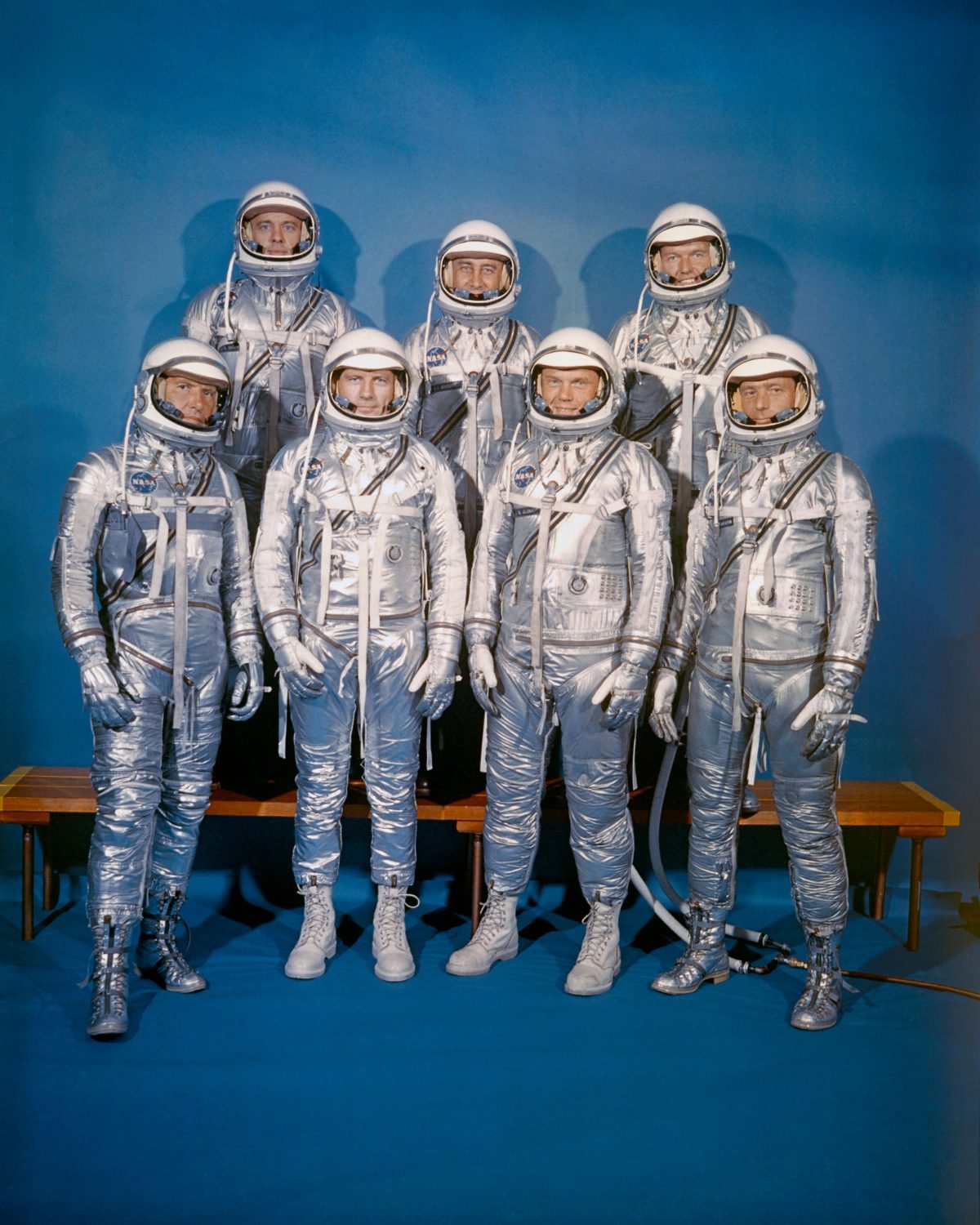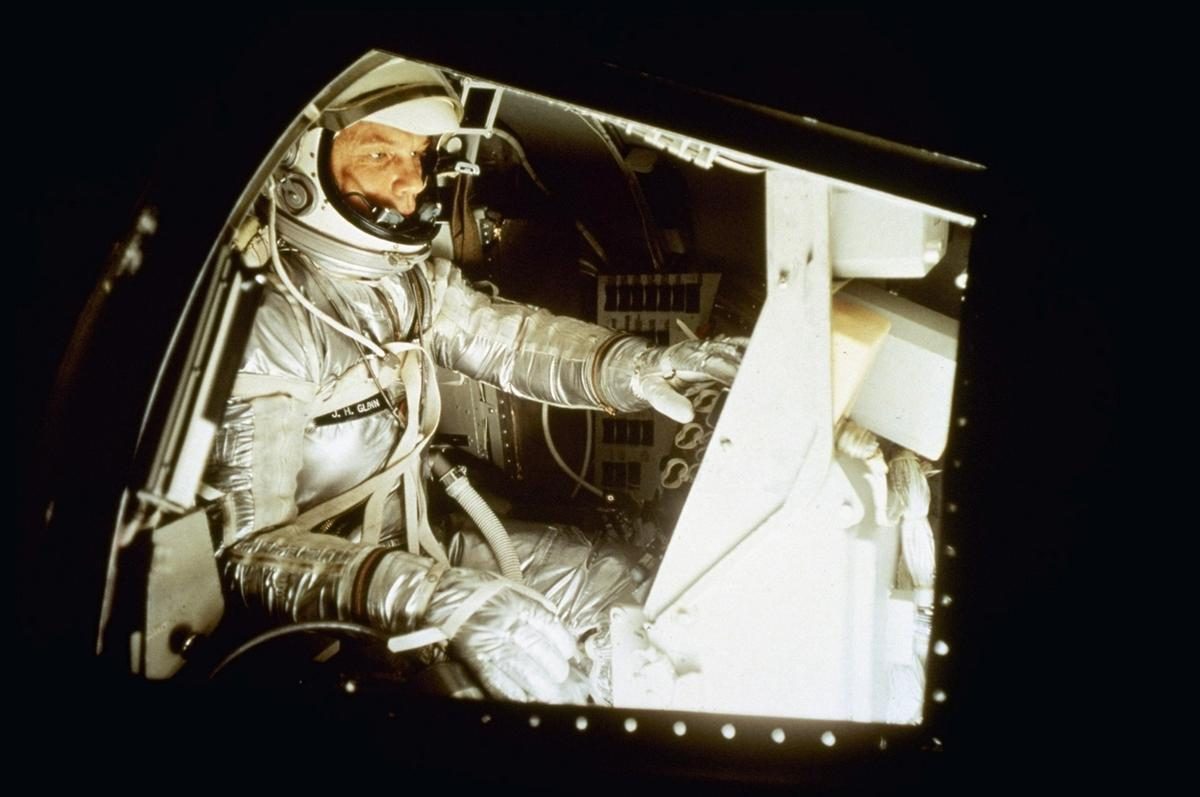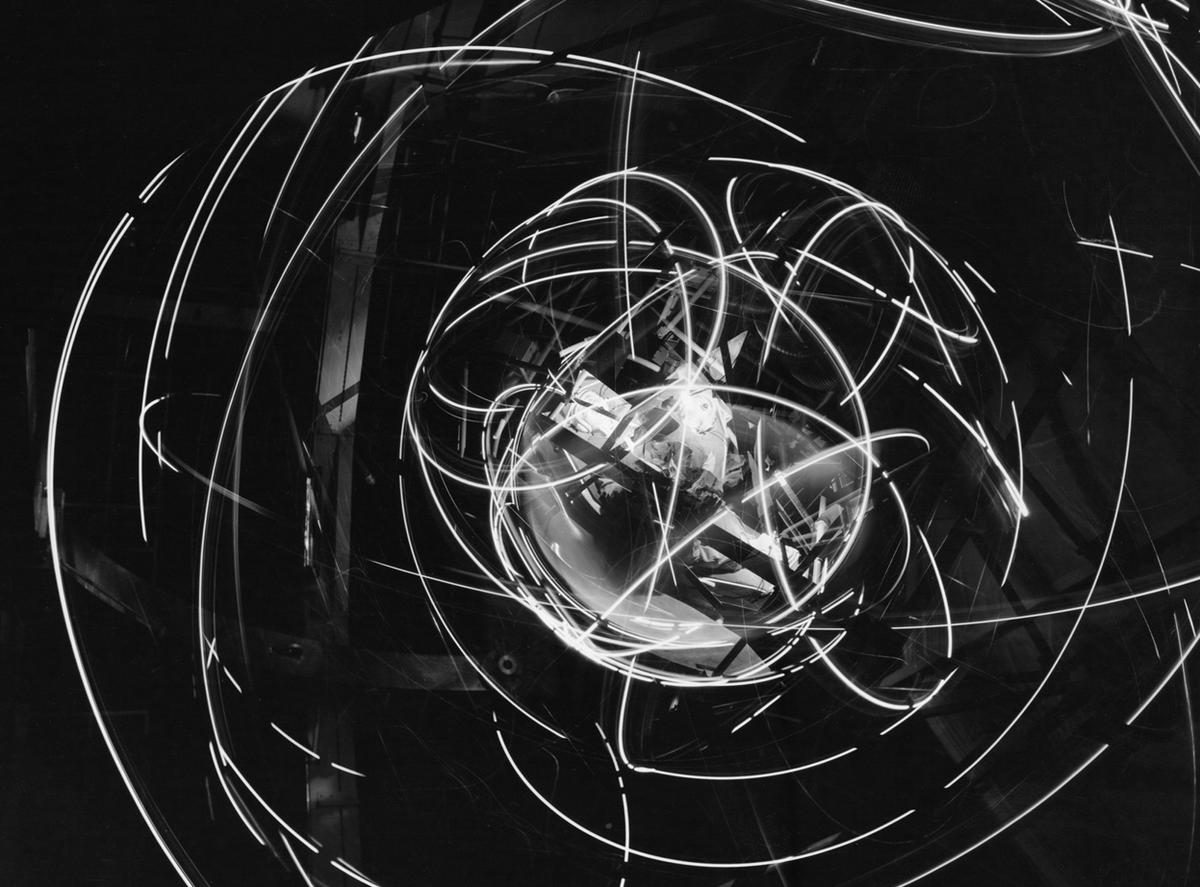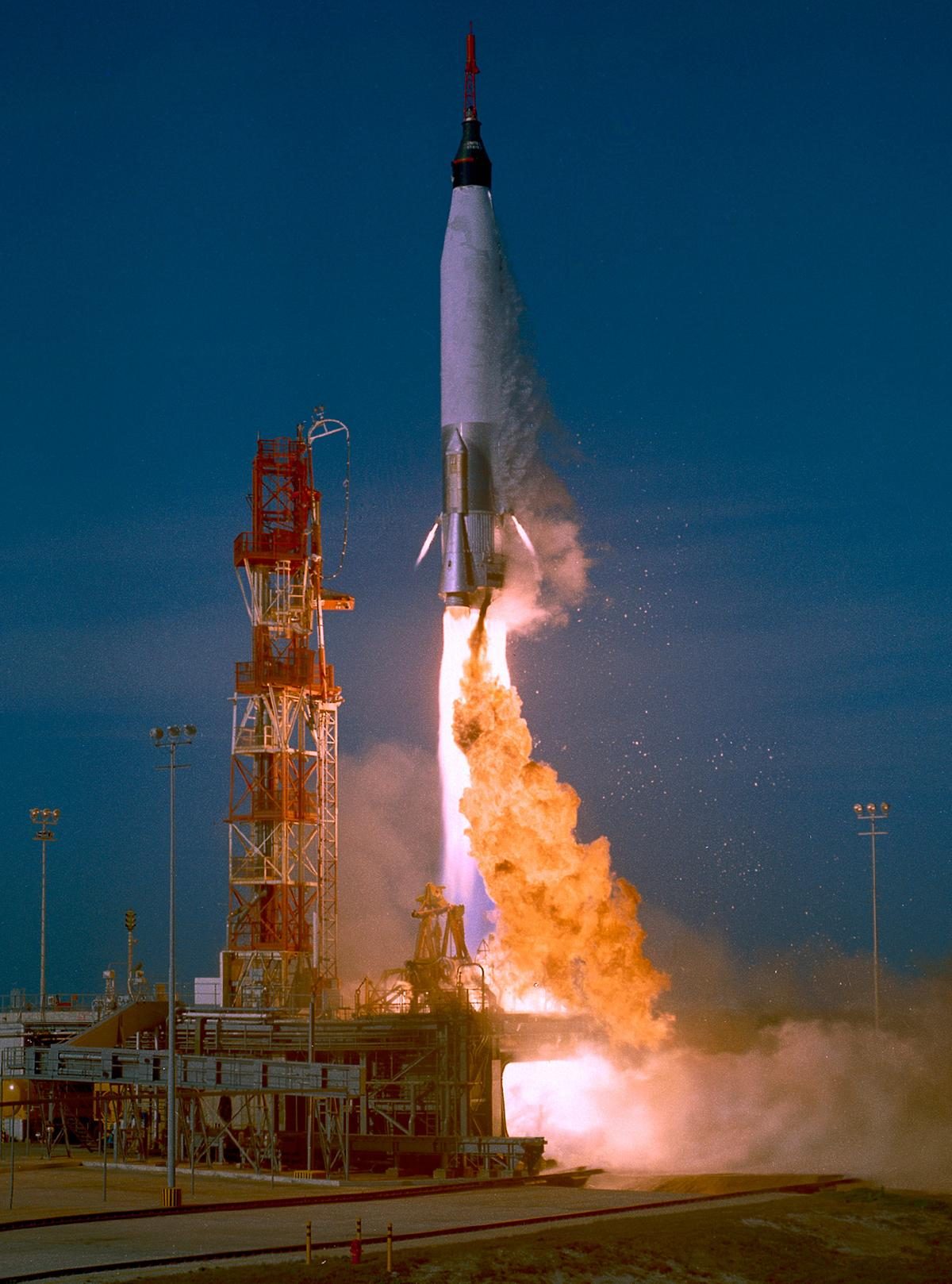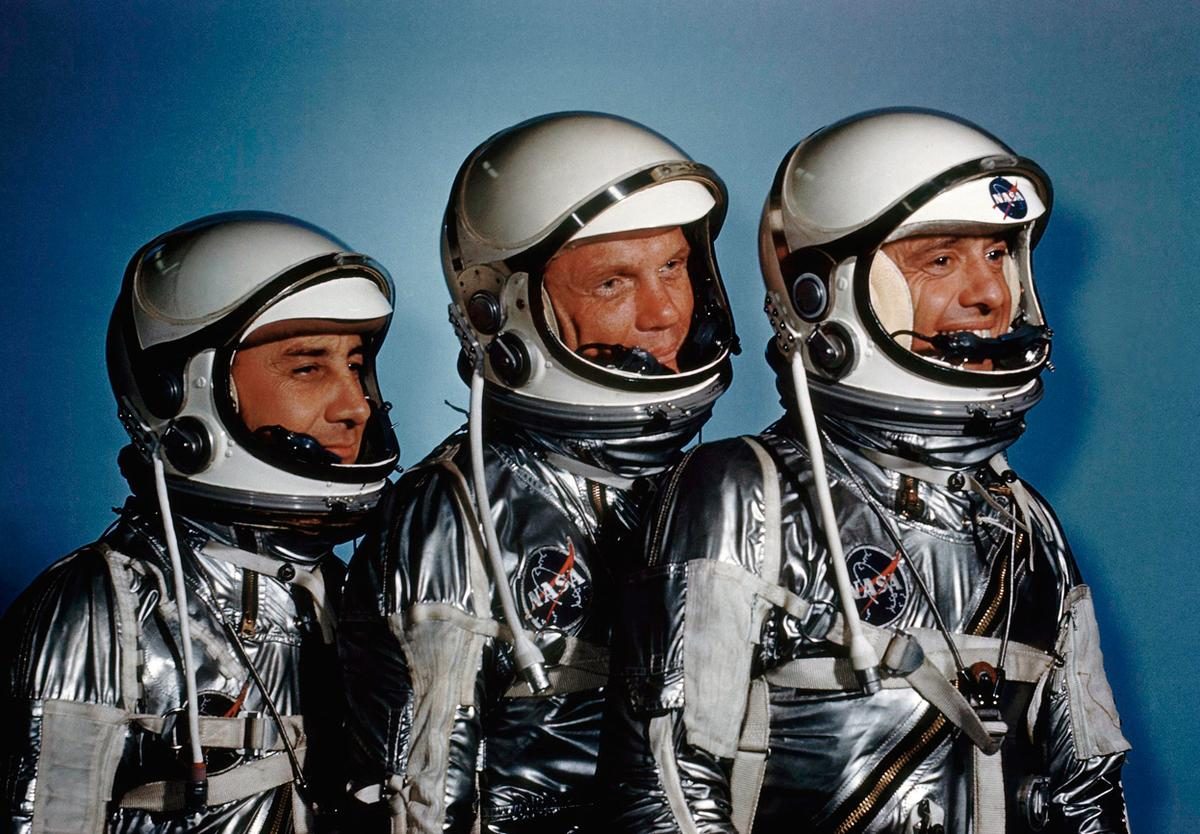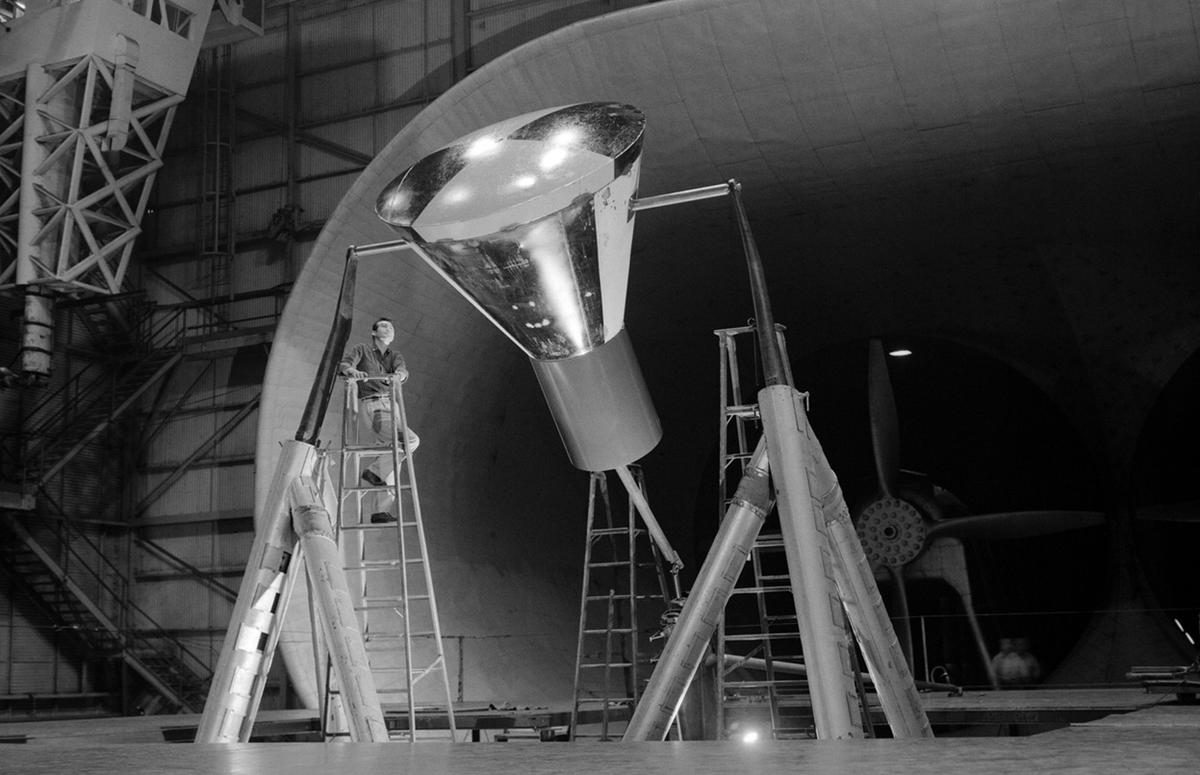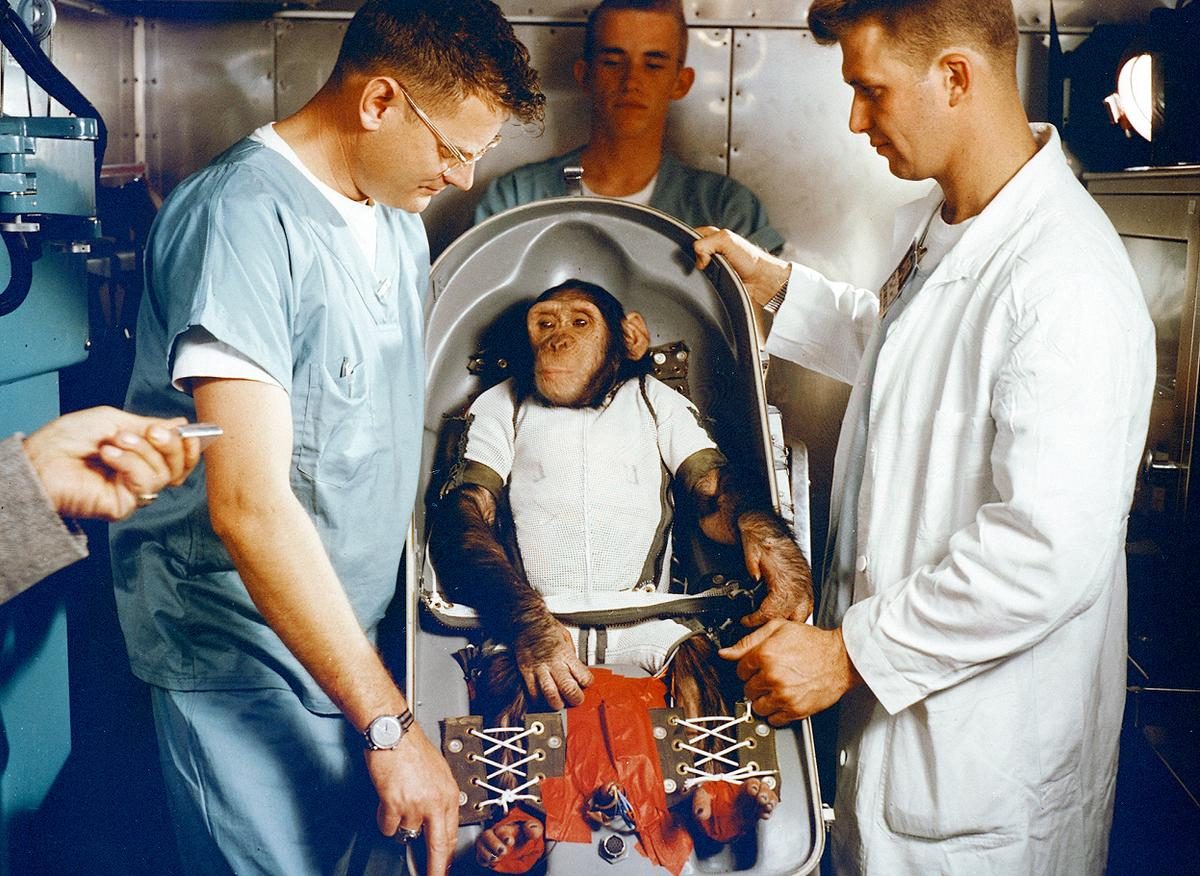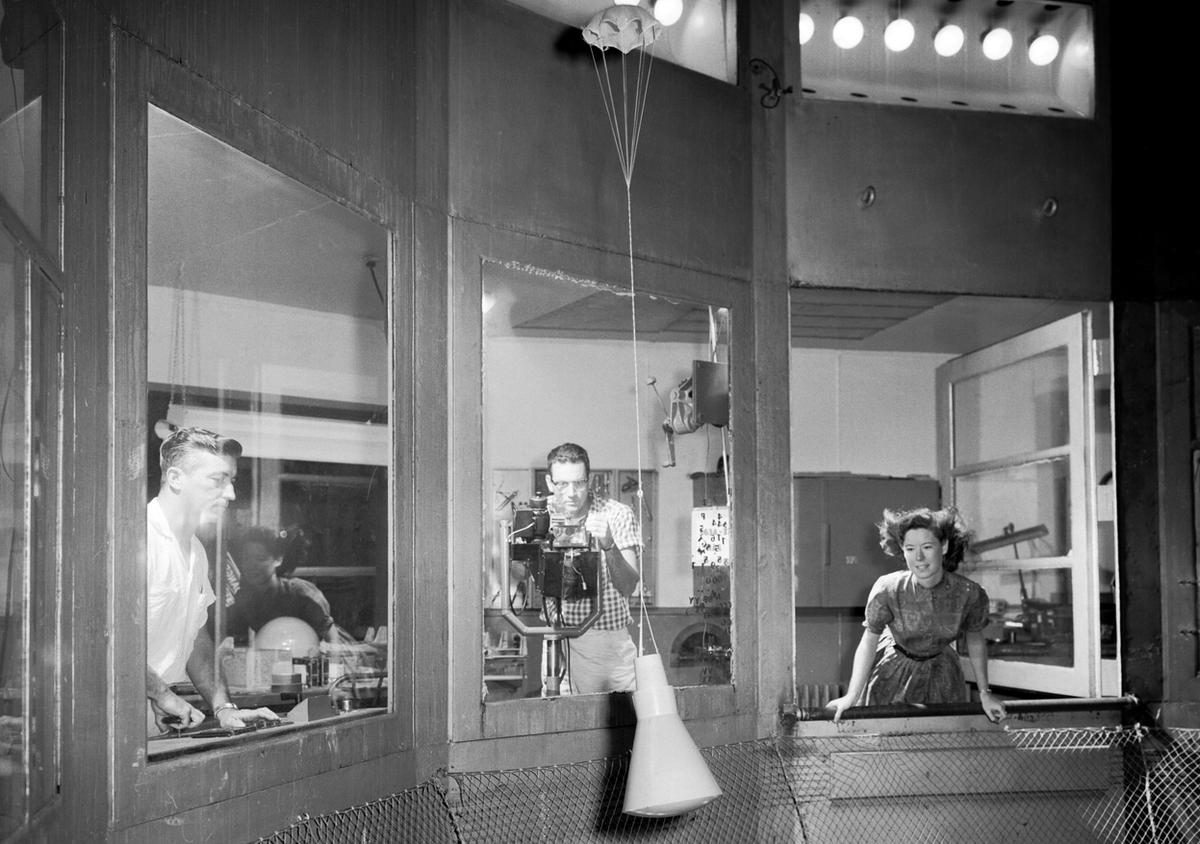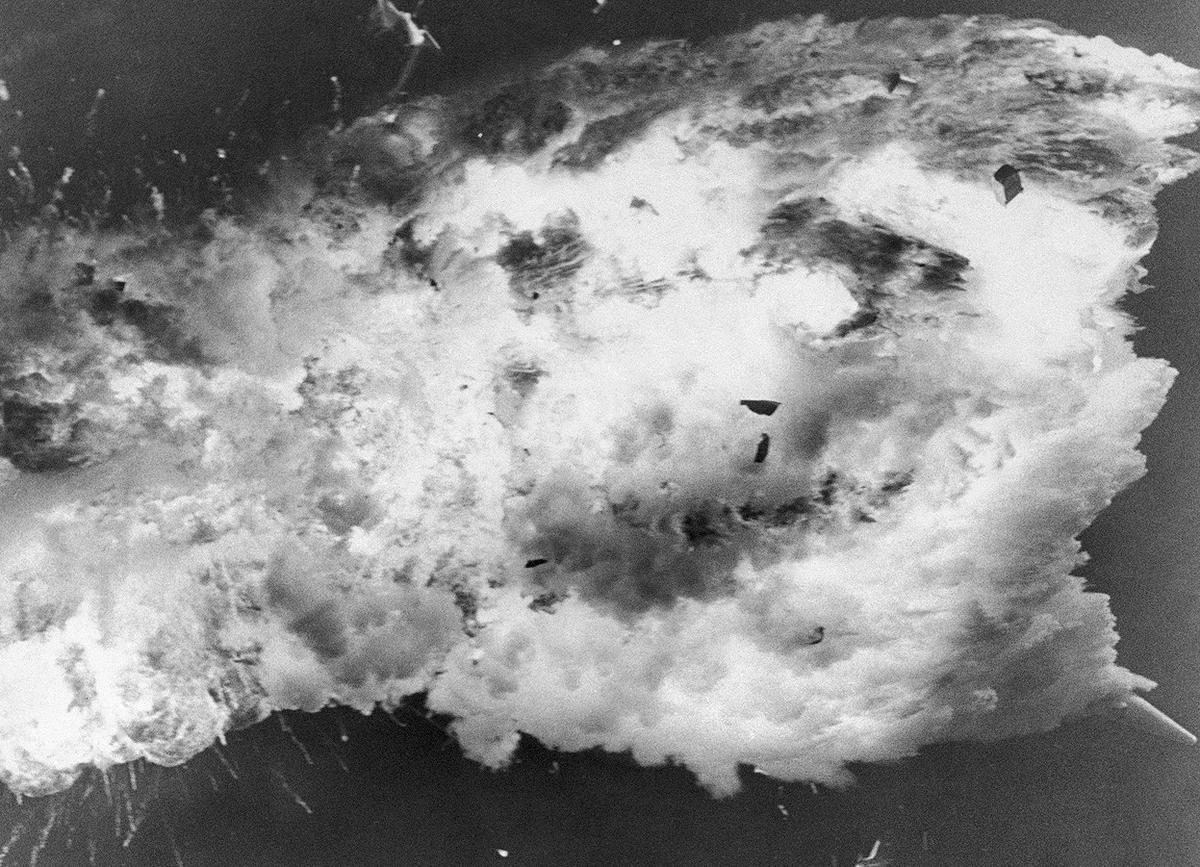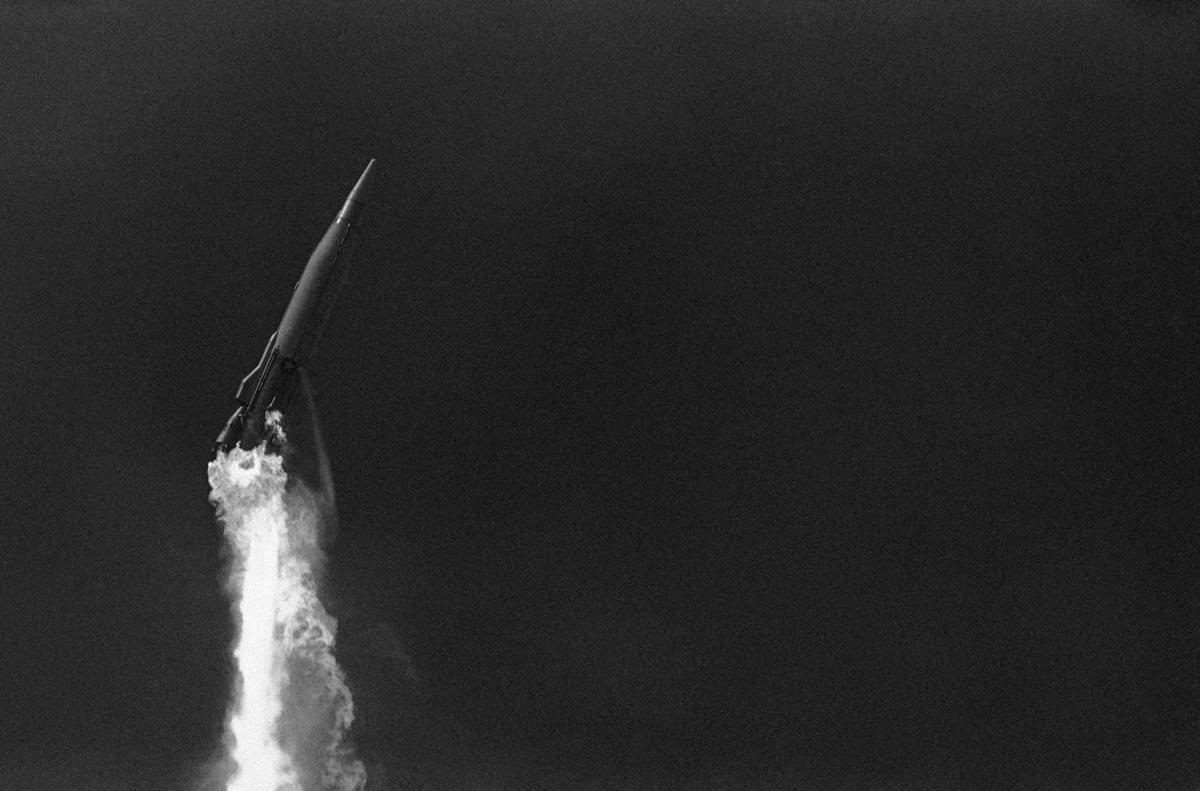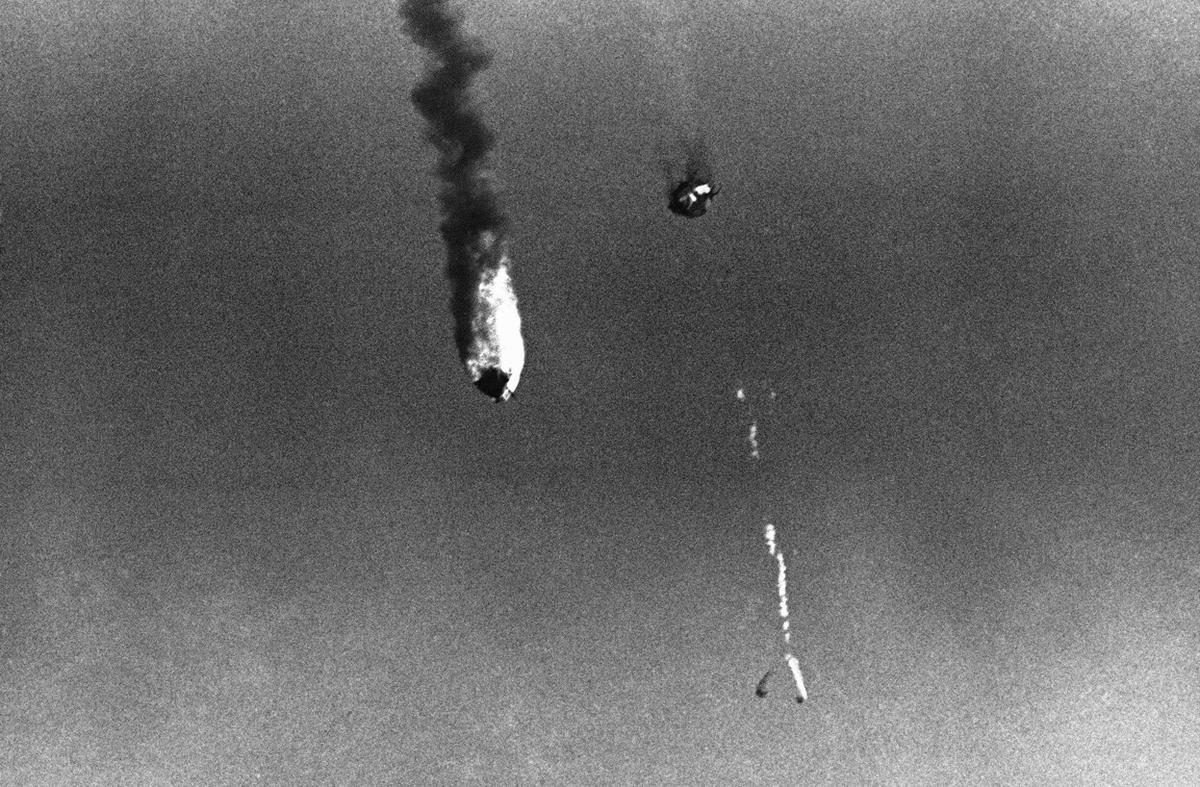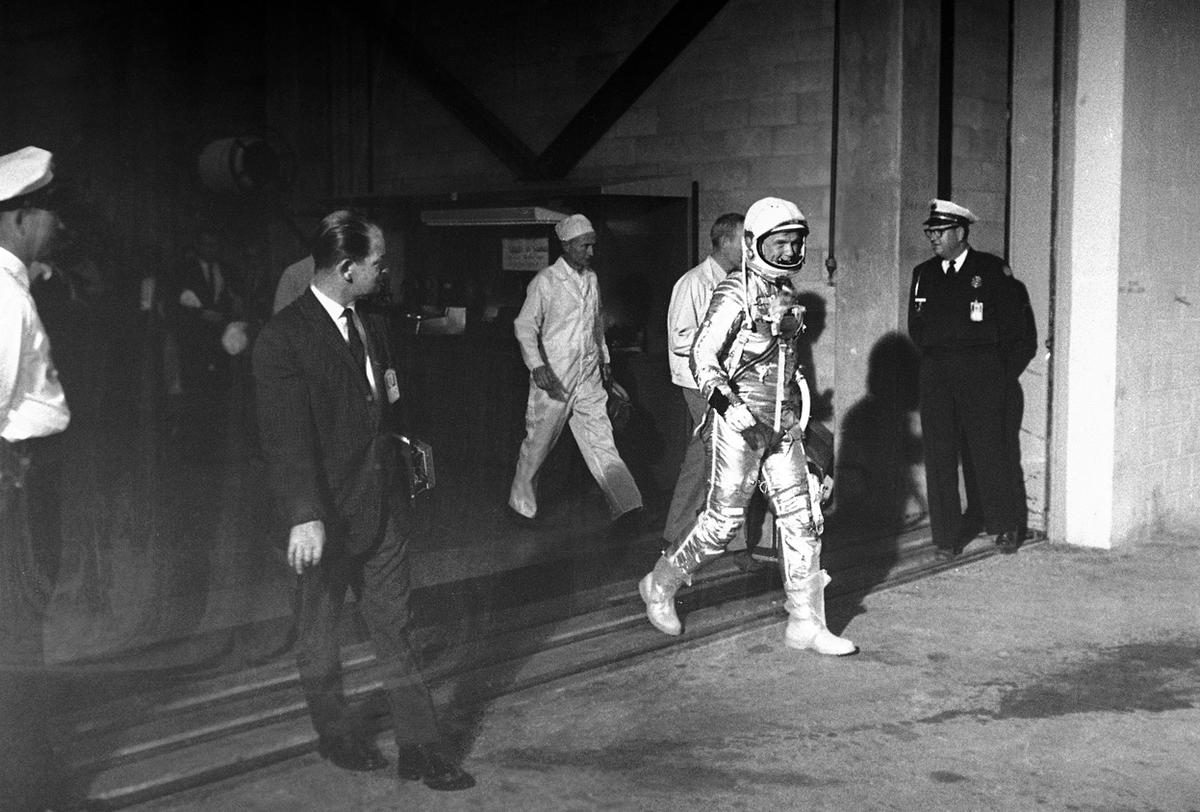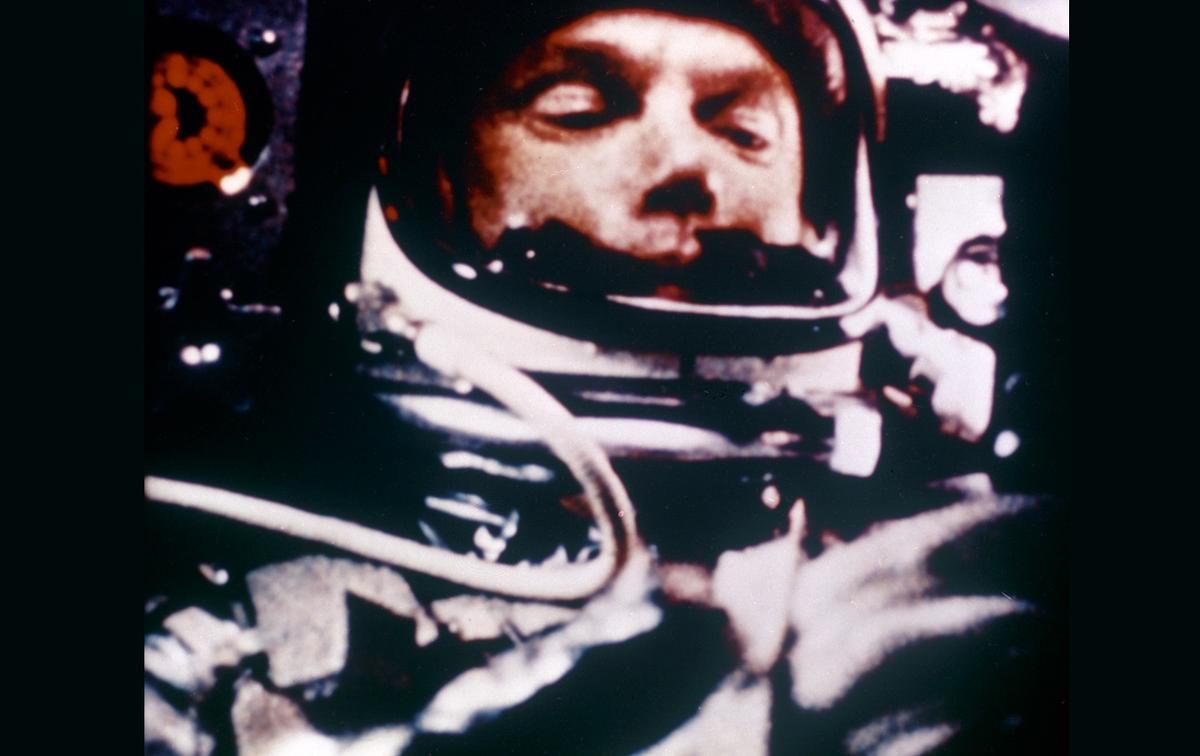“What made them so exciting was not that they said anything new but that they said all the old things with such fierce convictions… They spoke of ‘duty’ and ‘faith’ and ‘country’ like Walt Whitman’s pioneers… This is a pretty cynical town, but nobody went away from these young men scoffing at their courage and idealism.”
– James Reston of TheNew York Times record seeing the Mercury 7 Astronauts for the first time
On February 20th 1962, John Glenn (July 18, 1921 – December 8, 2016) blasted off aboard the NASA spacecraft Friendship 7. Glenn performed three successful orbits of the Earth at 17,400 miles per hour. This is the story of how Glenn became the third human in history to orbit the Earth, and the first American.

Mercury Astronauts Scott Carpenter (center) and John Glenn (far right) with their wives Annie Glenn (next to John) and Rene Carpenter (far left) at the Glenns house, Ohio, 1965.
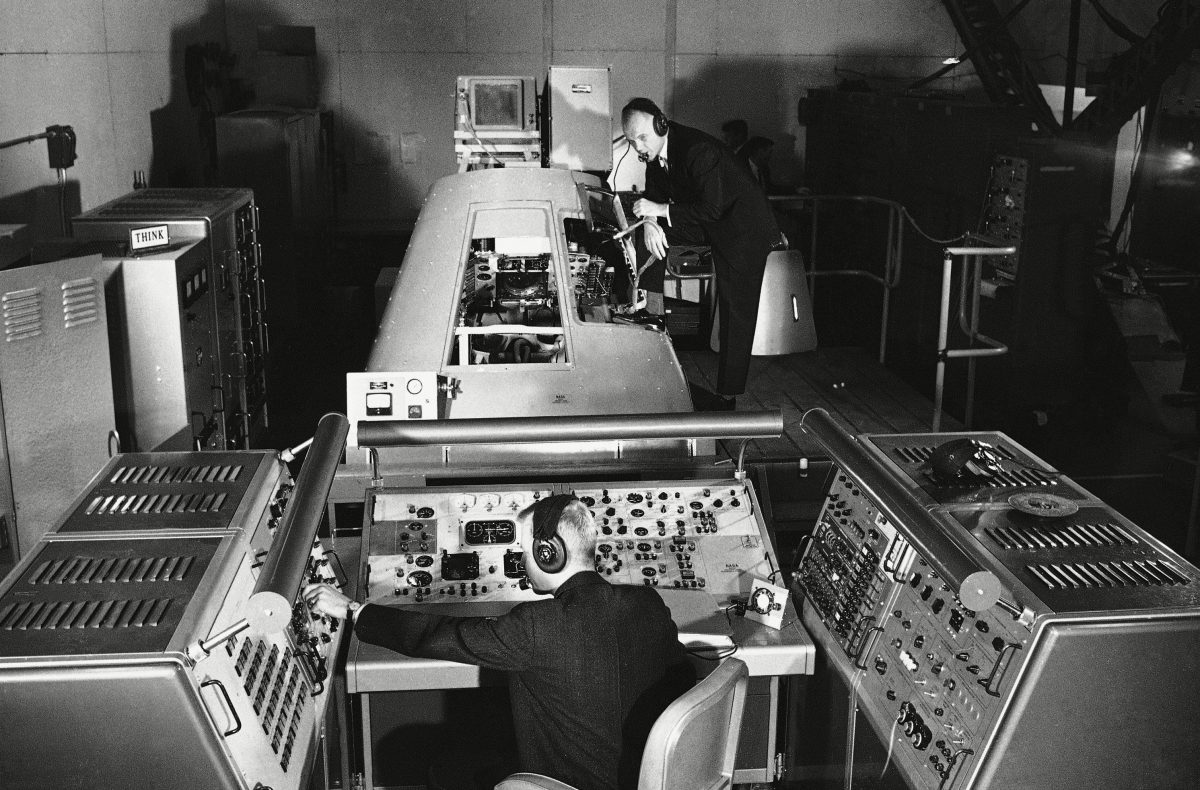
Marine Lt. Col. John Glenn, background, one of seven U.S. Astronauts, pose beside a Mercury Capsule procedure trainer with research engineer Charles Olasky at the control panel, Langley Field, Va. The controls simulate emergencies inside the capsule of the types which might be encountered during the first flight through space. The equipment is part of that used to train the astronauts at the NASA Research Center
11 Jan 1961
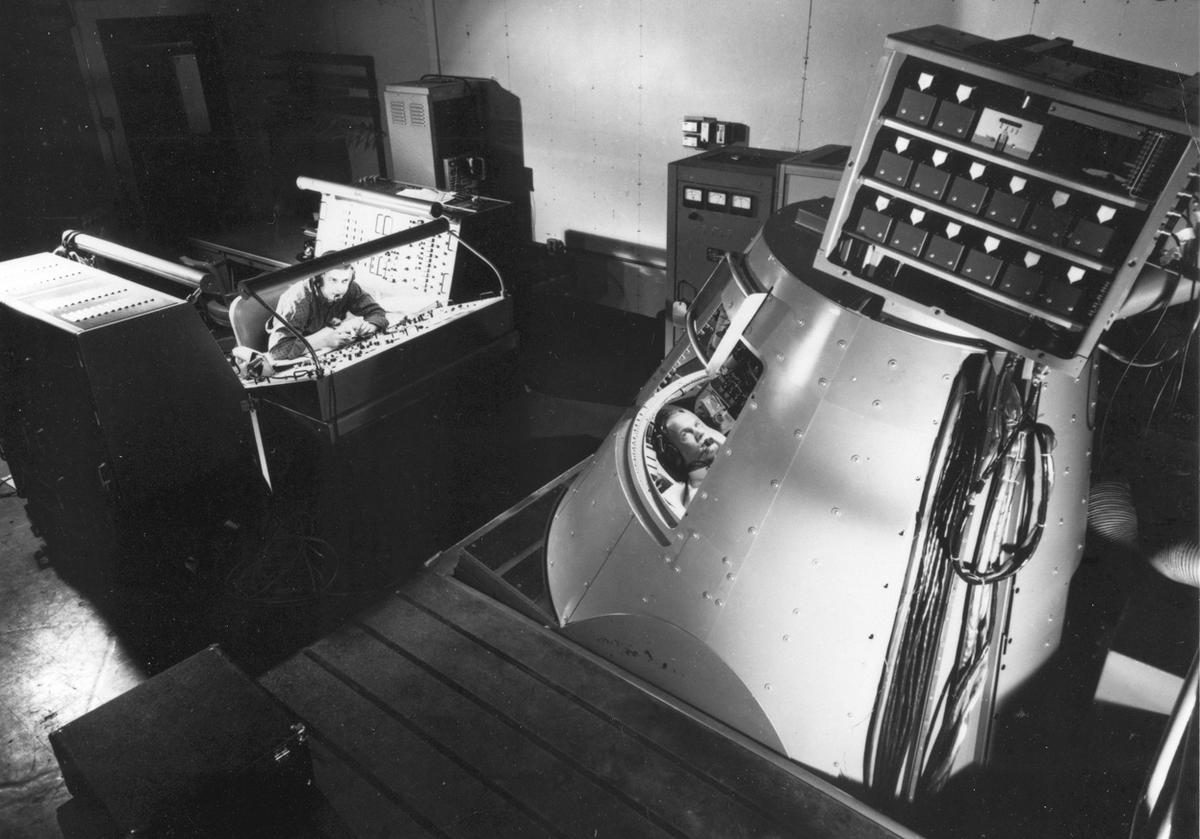
Mercury 7 astronaut John H. Glenn in the Mercury Procedures Trainer at the Space Task Group, Langley Field, Virginia.
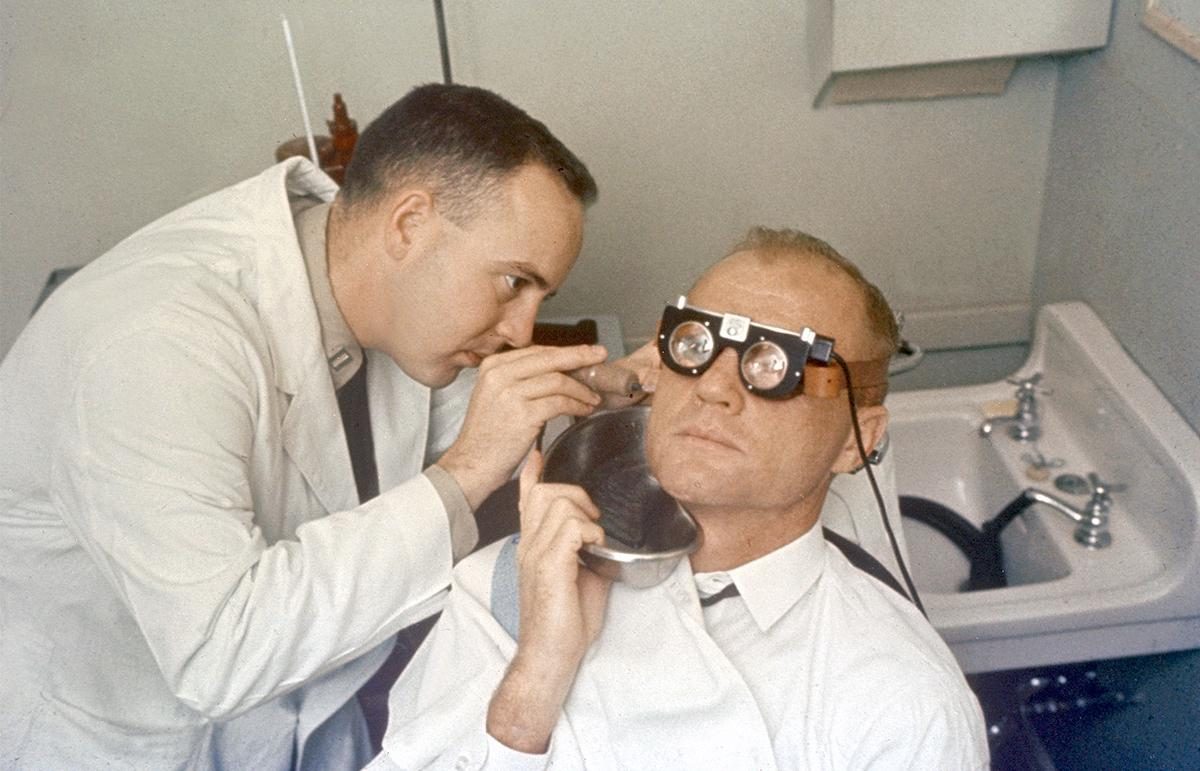
Astronaut John Glenn Jr.’s balance mechanism (semi-circular-canals) is tested by running cool water into his ear and measuring effect on eye motions (nystagmus)
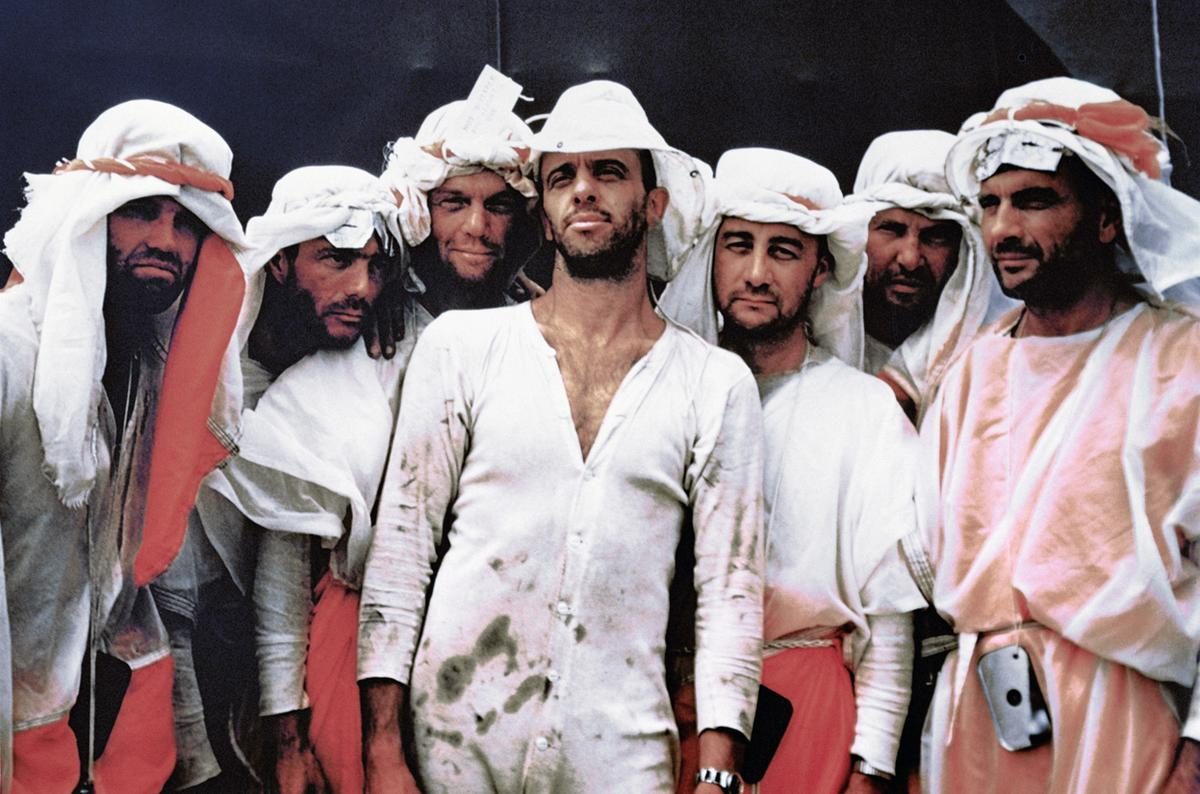
The original Mercury astronauts practice for an emergency landing in a remote area – clothing is made from their parachutes at the Air Force survival school at Stead Air Force Base in Nevada. From Left to Right : L. Gordon Cooper, Jr., M. Scott Carpenter, John H. Glenn, Jr., Alan Shepard, Virgil I. Grissom, Walter M. Schirra, Jr., and Donald K. Slayton.
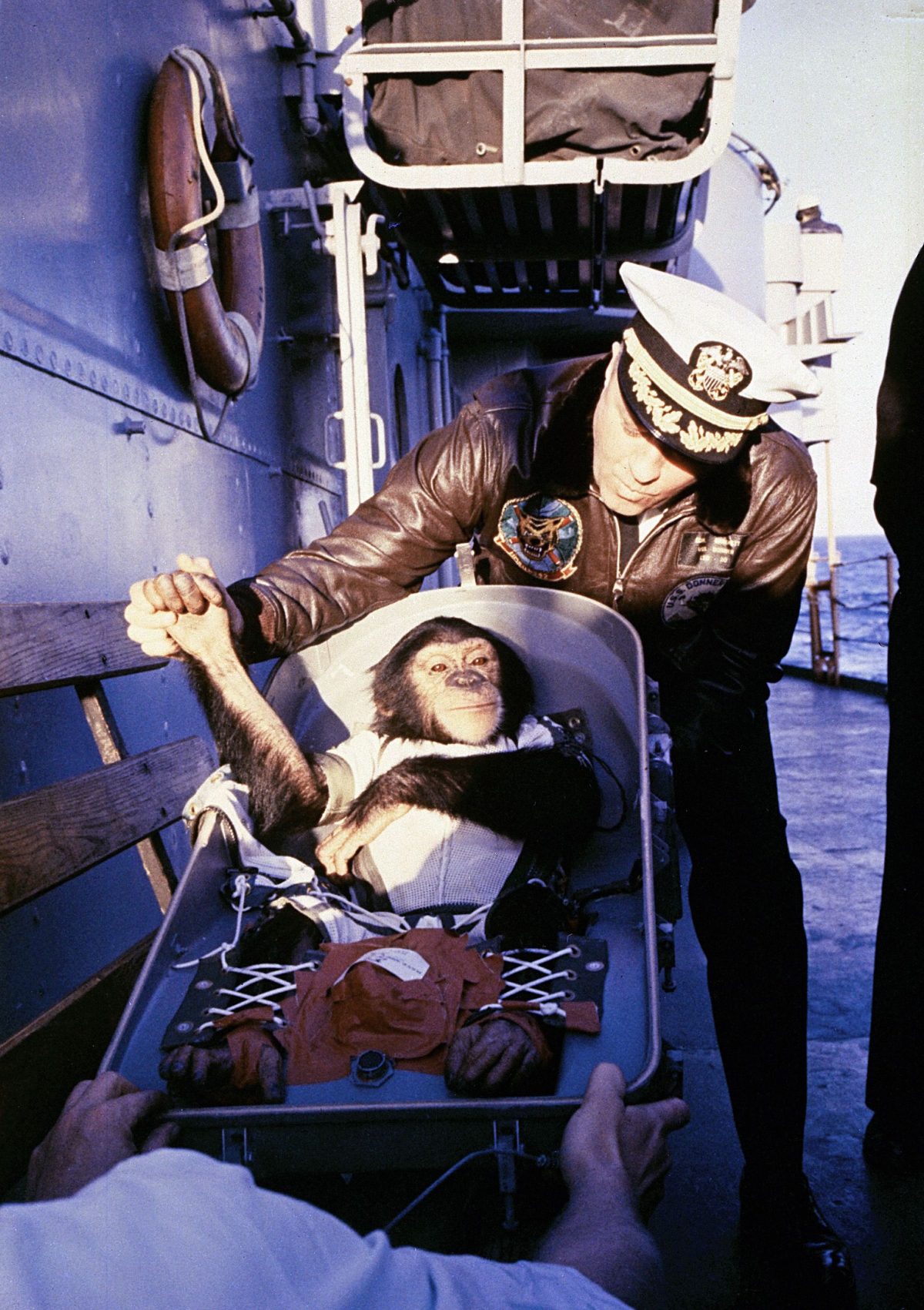
The famous hand shake welcome. Ham the Chimpanzee is greeted by recovery ship Commander after his flight on the Mercury Redstone rocket, January 31, 1961
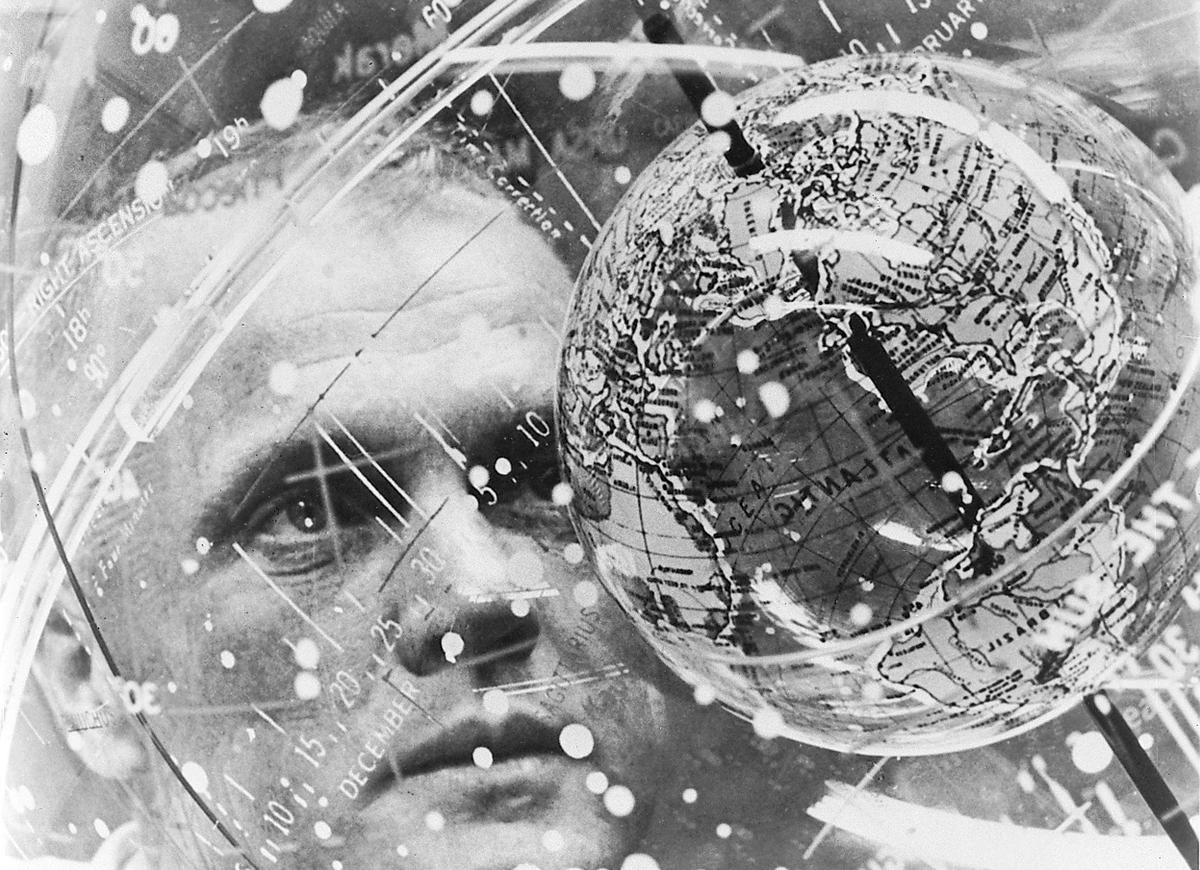
John H. Glenn Jr. studies a Celestial Training Device (concentric globes) at the Aeromedical Laboratory at Cape Canaveral, Florida – February 1962
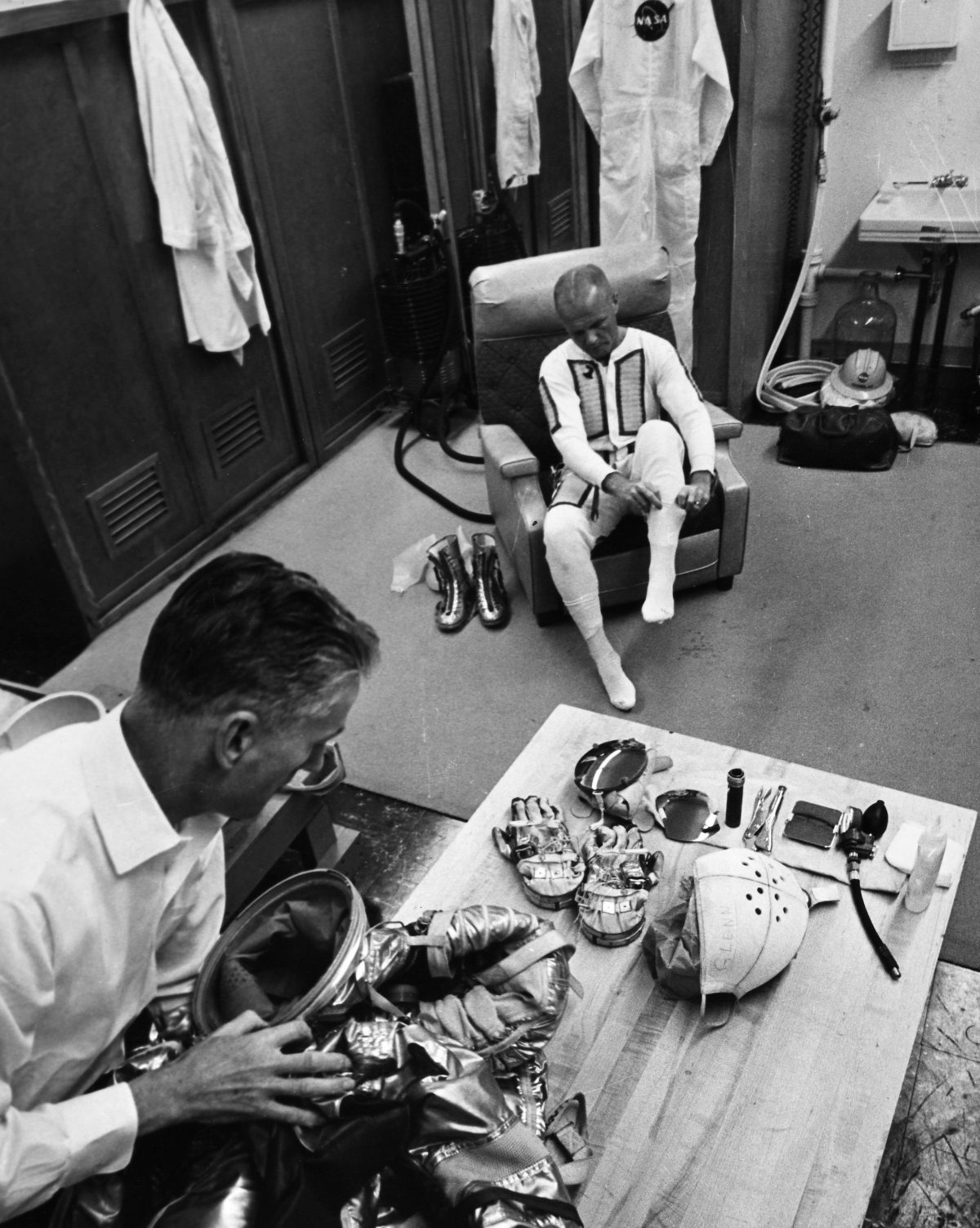
John Glenn (1921-2016). American Astronaut And Politician. Glenn And Space Flight Equipment Specialist Joe Schmitt Performing Suiting-Up Preparations Before The Launch Of Mercury Atlas 6 From Cape Canaveral, Florida, 20 February 1962.
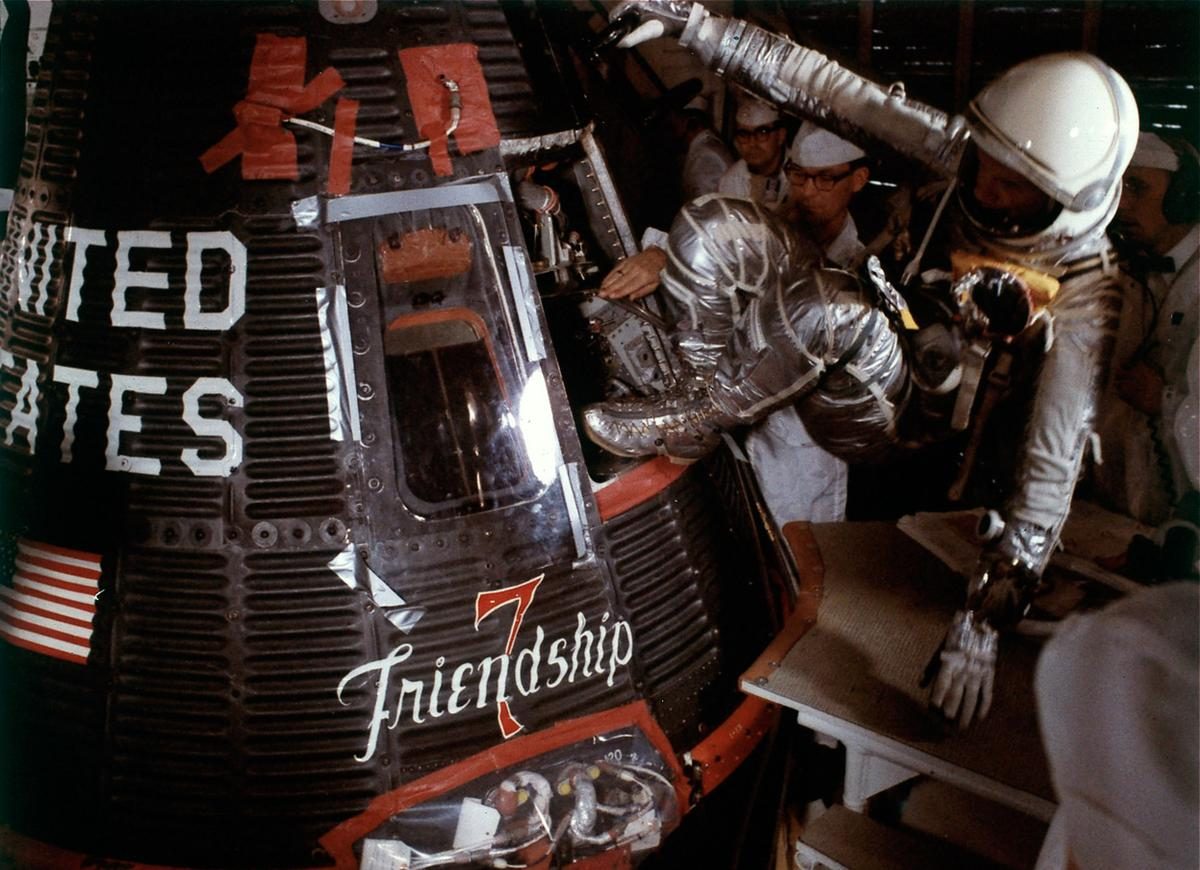
Astronaut John Glenn climbs into his Friendship 7 space capsule atop an Atlas rocket at Cape Canaveral, Florida on February 20, 1962,

The Atlas rocket and the newly-named Mercury spacecraft called Friendship 7 blast off from Cape Canaveral, Florida, February 20, 1962, carrying Col. John Glenn, Jr., as the first American to orbit the earth
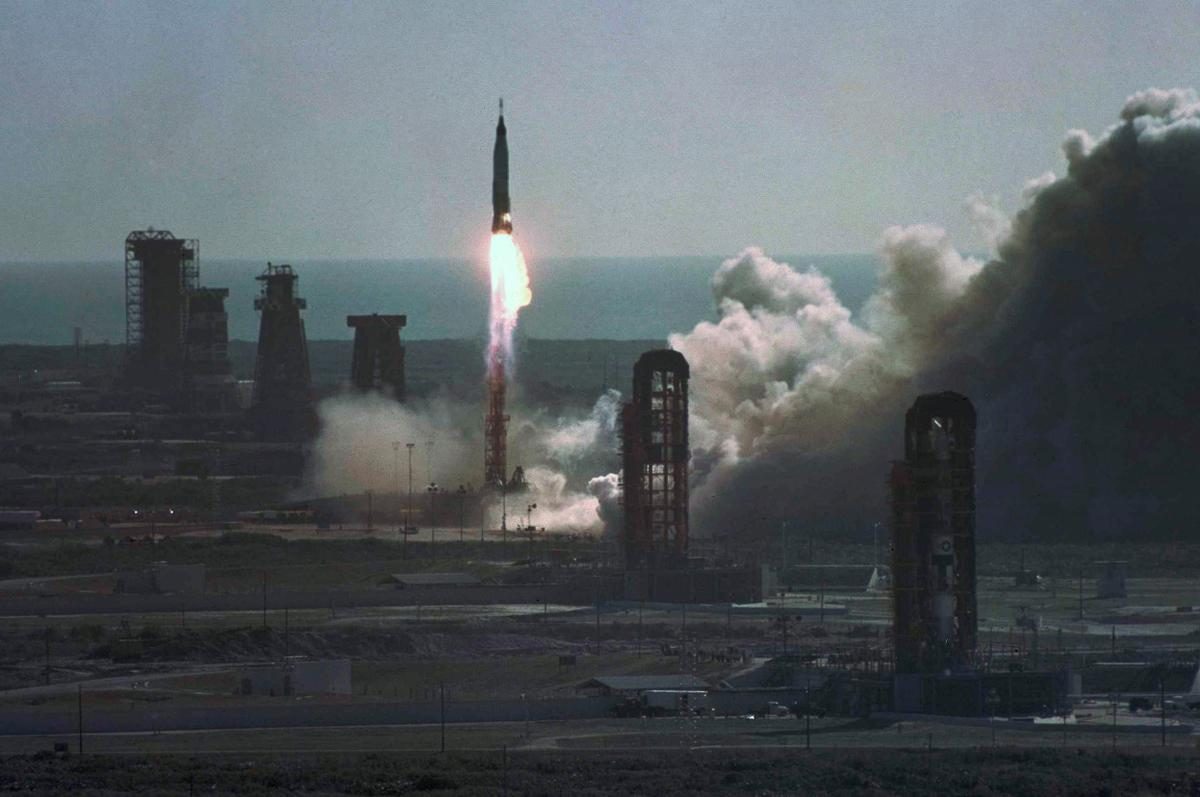
Astronaut John Glenn, blasts off aboard Mercury spacecraft Friendship 7 at Cape Canaveral, Florida – February 20, 1962
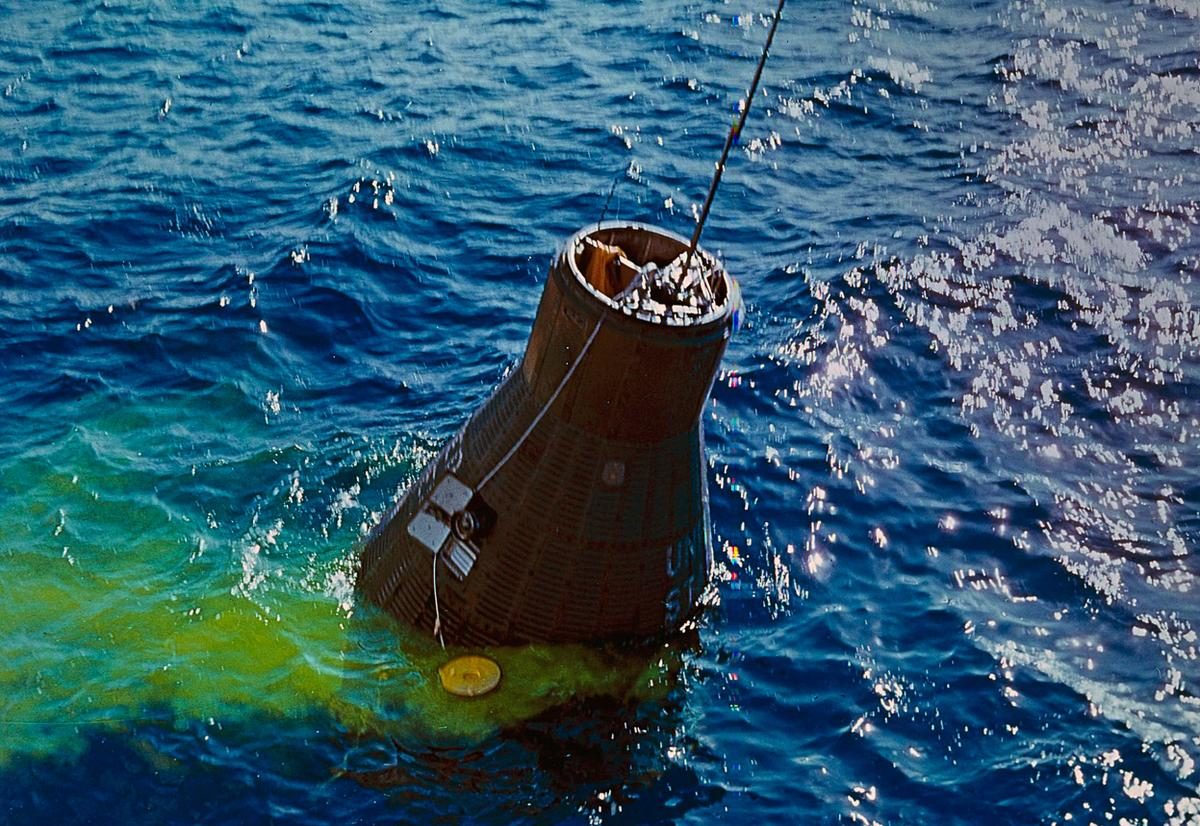
The Friendship 7 capsule, containing astronaut John Glenn, is recovered from the Atlantic by the destroyer U.S.S. Noa – February 20, 1962.
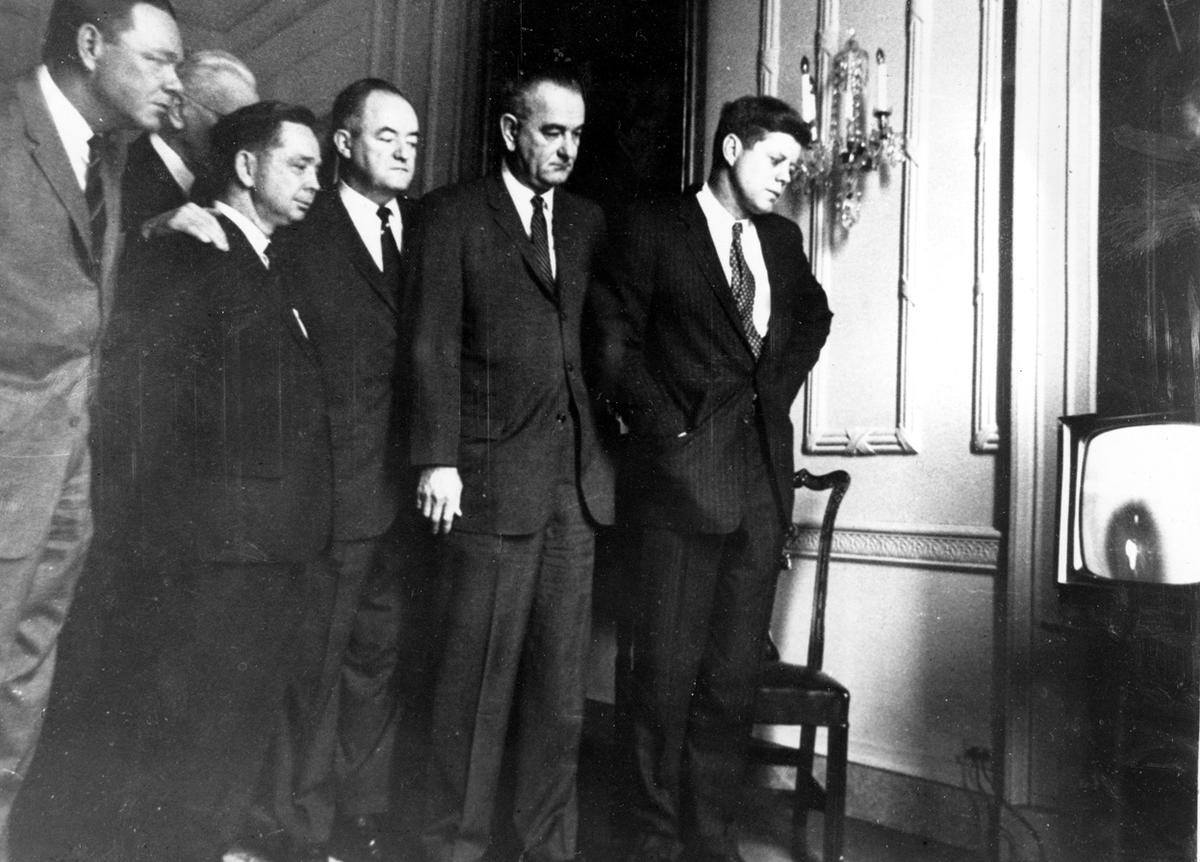
U.S. President John F. Kennedy, right, and Democratic congressional leaders watch the Atlas rocket and the newly-manned Mercury spacecraft blast off at Cape Canaveral, Florida, on a television set in the White House in Washington, District of Columbia, on February 20, 1962. From left are, Rep. Hale Boggs, Louisiana; House Speaker John McCormack, Massachusetts, partially hidden; Rep. Carl Albert, Oklahoma; Sen. Hubert Humphrey, Minnesota; Vice President Lyndon Johnson and Kennedy
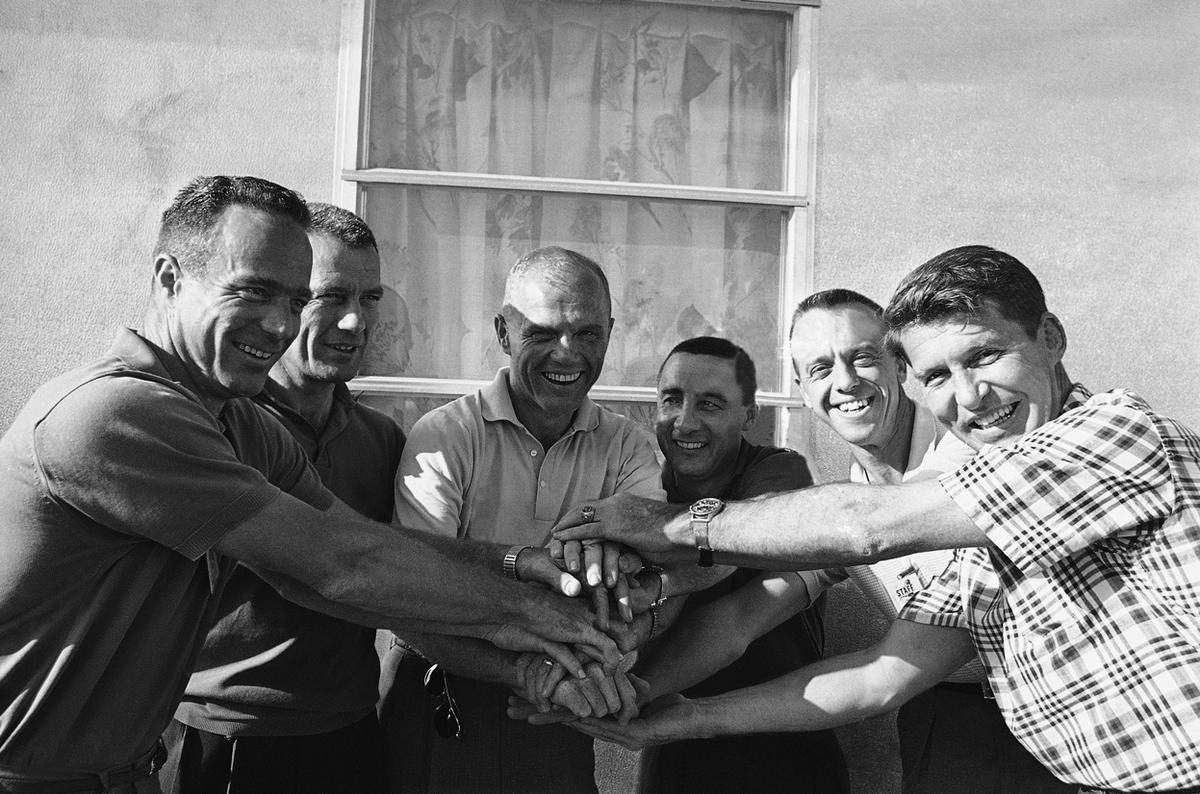
John Glenn, center, is greeted by fellow astronauts following his orbital flight, February 23, 1962 on Grand Turk Island, Turks and Caicos Islands. From left to right is: Scott Carpenter, Donald Slayton, Glenn, Virgil Grissom, Alan Shepard and Walter Schirra. The seventh member of the astronaut team, Leroy Cooper, was not available
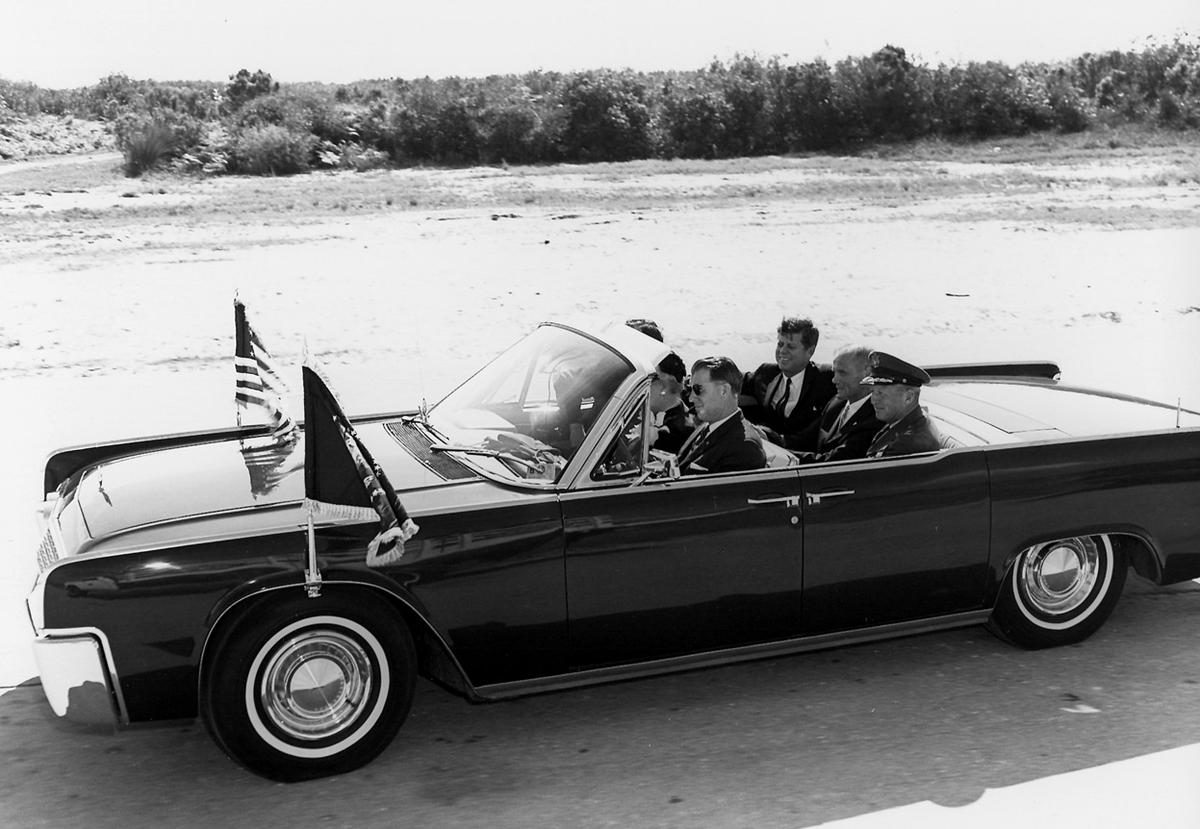
President John F. Kennedy, astronaut John Glenn and others take part in welcome ceremonies at Cape Canaveral in honor of Glenn’s successful orbital mission February 23, 1962

(Left) Col. John Glenn is helped from his Friendship 7 capsule by crewmen from the USS Noa in these February 20, 1962 Polaroid photos taken by then Navy fireman David Gillespie of Cleveland. (Right) Col. John Glenn is assisted by an unidentified sailor aboard the USS Noa following his historic orbital flight in this February 20, 1962 photo. The Noa made the recovery after the historic flight when the capsule landed 44 miles from the primary recovery vessel.
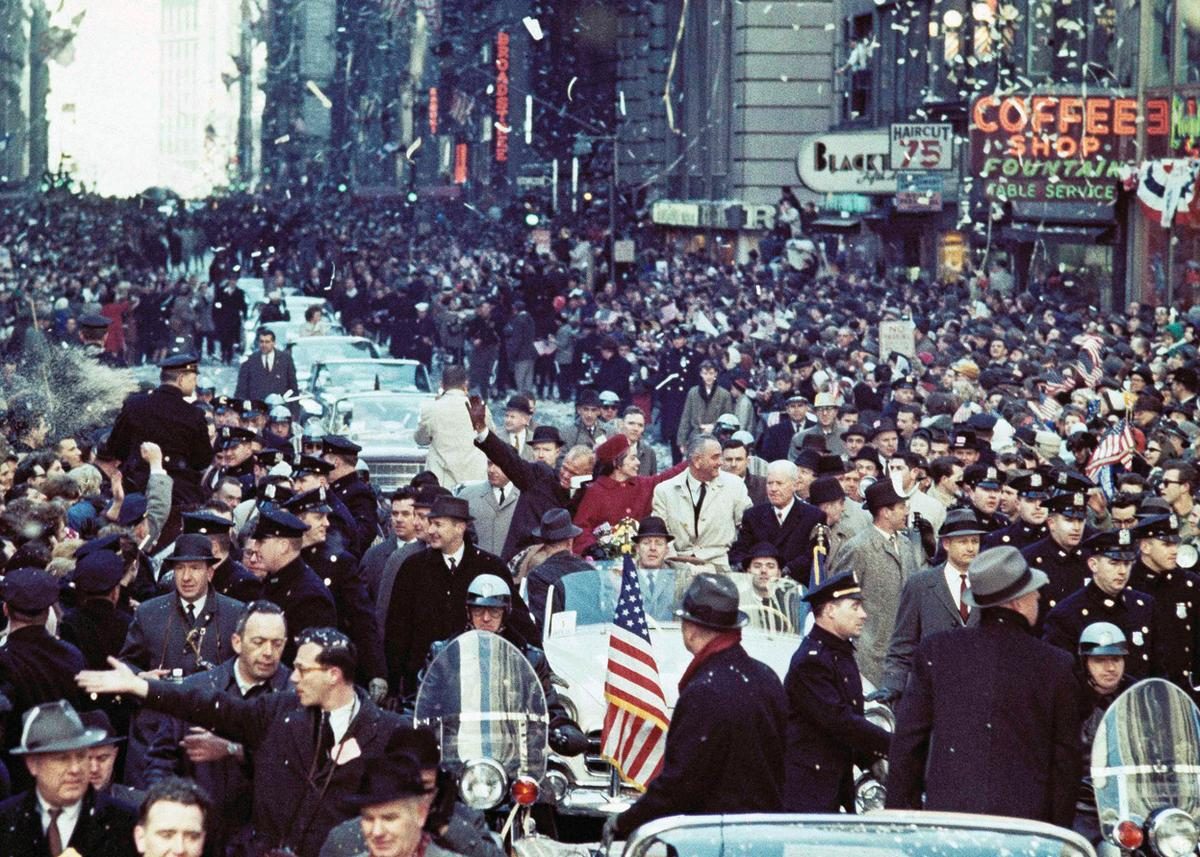
John Glenn, his wife Annie, and Vice President Johnson attend a ticker tape parade on March 1, 1962 in New York City
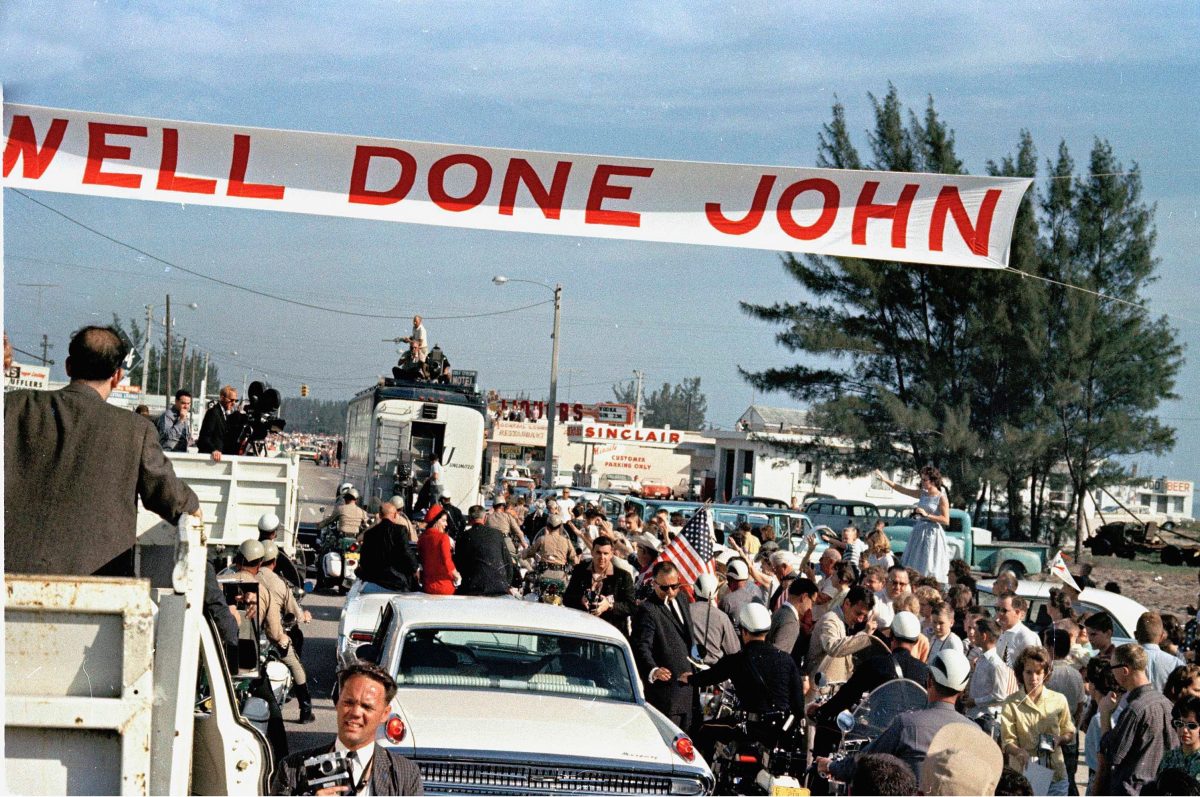
Astronaut John Glenn, left, sitting on back of car, is greeted by admirers as his car passes under a “Well Done John” banner in Cocoa Beach, Fla., . Glenn’s wife Annie, center, dressed in red, and Vice President Lyndon Johnson are in the car with him – 23 Feb 1962
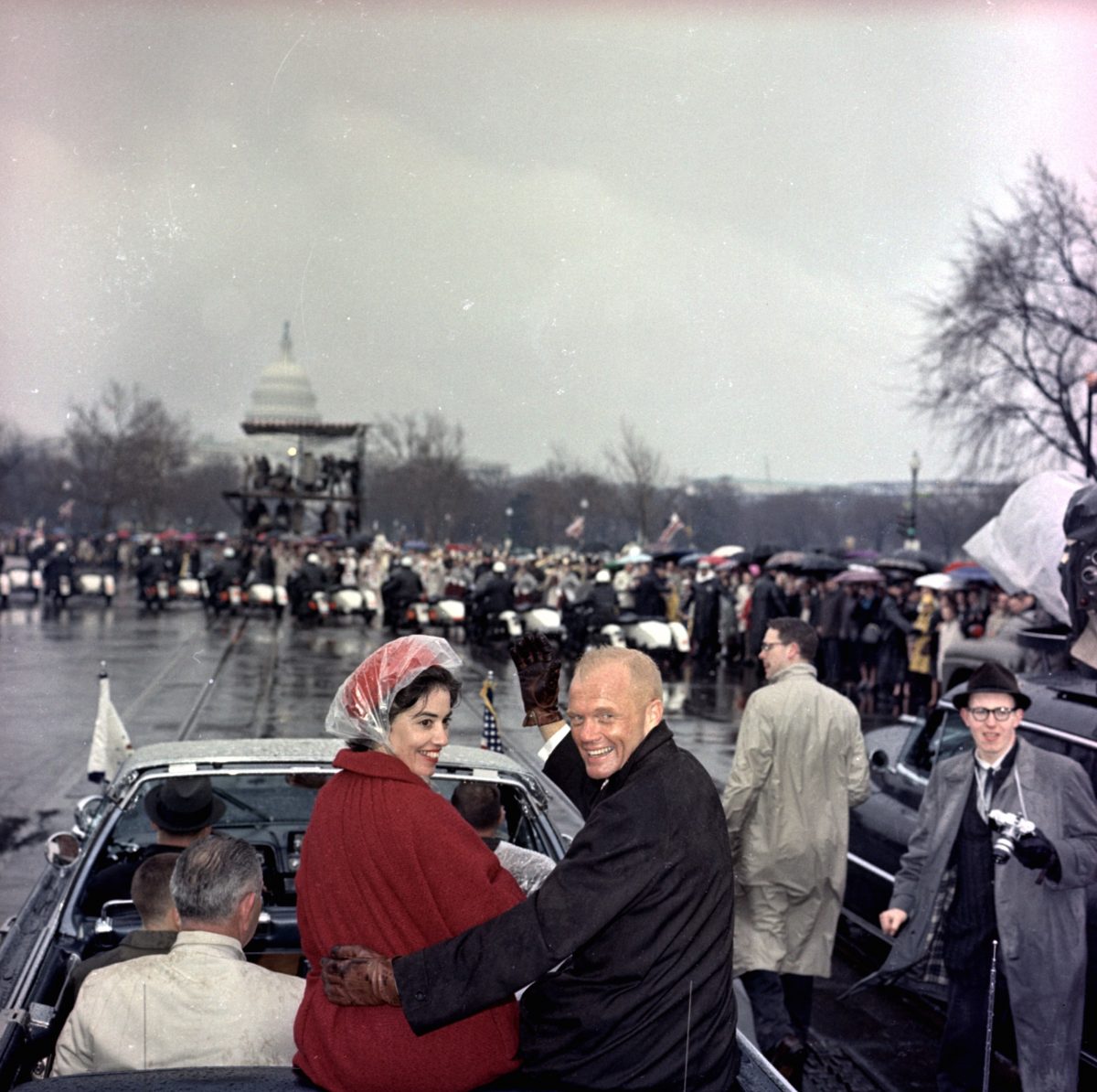
Mercury astronaut John Glenn and his wife, Annie, ride in the back of an open car with Vice-President Johnson during a parade in Glenn’s honor in Washington. – Feb 26 1962
Read on in The Right Stuff, Tom Wolfe’s gripping tales of adventure, courage and pathos.
Would you like to support Flashbak?
Please consider making a donation to our site. We don't want to rely on ads to bring you the best of visual culture. You can also support us by signing up to our Mailing List. And you can also follow us on Facebook, Instagram and Twitter. For great art and culture delivered to your door, visit our shop.
